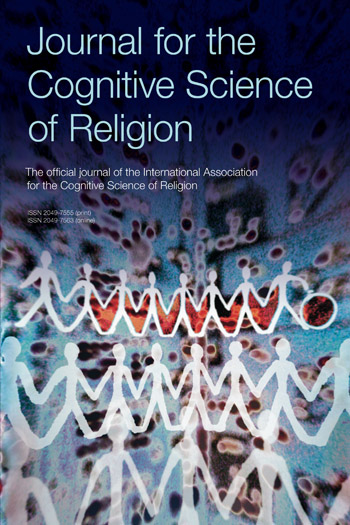Body in Ritual
Communicating through Embodied Practices in Religious Ritual
Eva Kundtová Klocová [+–]
LEVYNA – Laboratory for the Experimental Research of Religion, Masaryk University
Research of Religion), Masaryk University, where she conducts both lab and field experiments and collaborates on cross-cultural and interdisciplinary research projects. Her main interests are embodiment theories of ritual, theories of ritual communication, evolutionary theories of religion, methodology of experimental research in humanities and social sciences, and cognitive theory in the study of religion. She has co-authored empirical studies concerning religious behaviour and beliefs; the effects of religious priming on parochial prosociality, belief in (non)moralizing gods and dishonest behaviour, signalling functions of extreme rituals as well as papers and chapters focusing on theoretical assumptions and methodological approaches to the study of religion; methodological approaches in cognitive historiography, theory of embodied cognition in
the study of religion. She directs the research infrastructure HUME Lab (Laboratory for Experimental Humanities) at Masaryk University and currently serves as the Secretary General of the International Association for the Cognitive and Evolutionary Sciences of Religion (IACESR).
Religious rituals come in a seemingly inexhaustible variety of forms, compiled from diverse components and attributes. Yet, there are clear patterns using body symbolism, bodily signals, and manipulations of participants` bodies that are so far largely unchartered by the scientific study of religion. Prevalent approaches to the study of religion often prioritise religious thought, perpetuating the natural bias toward a dualistic understanding of the body as a possession, rather than an integral part of the mind as well as bias for protestant Christianities.
This volume offers a clear, integrative, and systematic research program of the body in religious ritual employing a multilayer model of ritual communication through bodily practices. The model consists of three levels: individual, social, and symbolic, each representing a different level of complexity of communication. While evaluating theoretical frameworks for each level, the volume also addresses the interconnectedness of the levels and suggest ways to look for continuities between the levels.
The volume focuses on one concept widely communicated in religious rituals: power asymmetry. Diverse modalities of communicating power relations between superhuman and human agents are shown on all three levels. On the individual level, the focus is on the use of specific ritual postures and other acts that constrain, or prescribe, what happens to the body during a ritual. Although such practices can serve as a communication device in interpersonal contact, the volume emphasizes their effect on the individual, on both biochemical and psychological levels. The social level is explored mainly through the connection between verticality and the perception of dominance. Visual information of size and position provides an evolutionary stable type of cue of dominance or strategic benefit for the larger or higher positioned individual in potential confrontation. Power and dominance are further communicated on the symbolic level with embodied metaphors that refer to evolved sensitivity to size and position.
The volume also offers and illustrates a research program that could produce opportunities for interdisciplinary bridging between the strictly naturalistic perspective and socio-cultural approaches. It argues that the topic of body and physicality in religious rituals can (and should) serve as a natural opportunity for systematic interdisciplinary collaboration. It showcases this approach on the bodily position of kneeling, which is used cross-culturally in many different ritual settings.
Table of Contents
Chapter 1
Chapter 2
Chapter 3
Chapter 4
Chapter 5
Chapter 6







